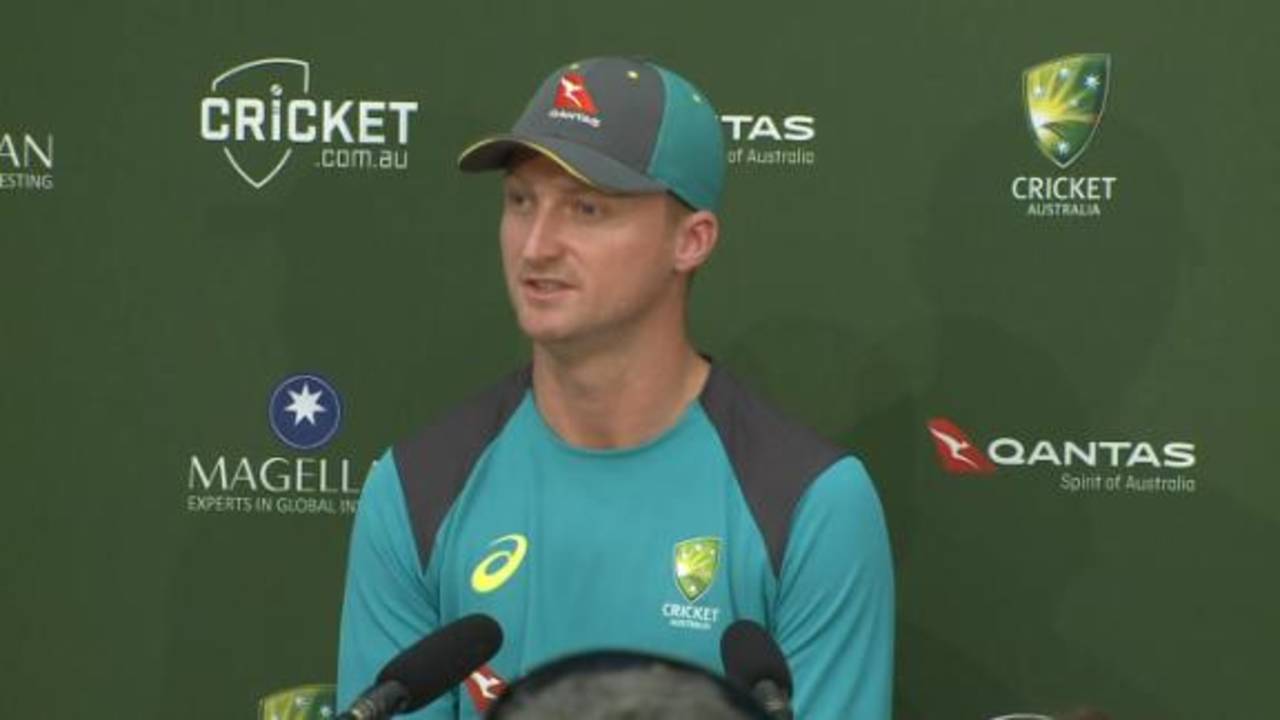James Sutherland, the Cricket Australia chief executive, has given the Test team's fast bowlers the green light to carry on their concerted short-pitched attack on England's tail, leaving it up to the game's neutral umpires to intervene if they think play is becoming too dangerous relative to the skill of the batsman on strike.
As one of the game's most senior administrators, Sutherland signs off on any changes to Test-match playing conditions through his role on the ICC chief executives committee, while Australia's coach Darren Lehmann also sits on the cricket committee where the laws and conditions under which the game is played are frequently discussed.
Though the former England captain Mike Atherton has
suggested that the umpires should be more proactive in ensuring that less capable batsmen were not unduly exposed to excessive short-pitched bowling, Sutherland said he saw no problem with pace bowlers searching for weaknesses in the techniques of all batsmen, via short balls or other means, as part of the balance between bat and ball.
"I don't think there's anything new about fast bowlers attacking tail enders where they show an area of vulnerability. I think that's all part of the game," Sutherland said at a CA family day outside the MCG. "What's also part of the game and the playing regulation and the laws and what have you, that's up to the umpires to do. I certainly don't have any problem with fast bowlers attacking batsmen and trying to get them out."
Following the death of Phillip Hughes, after he was struck freakishly on the side of the neck by a bouncer in 2014, Sutherland helped set the terms of reference for CA's own review, and also attended the New South Wales Coronial Inquest at which it was determined there had been "no malicious intent" in the use of short balls to Hughes on the day he was struck. Before that inquest handed down its findings, Sutherland had
spoken of the need to balance the fabric of the game, including the use of bouncers, with safety concerns.
"You'll see in the brief terms of reference we gave David Curtain that we needed to draw a line about the laws of the game and to have some perspective around that," Sutherland said in May 2016. "You can make the game of cricket a lot safer by playing with a tennis ball, but that's not how Test cricket has been played and it would obviously be a very different game.
"We're not wanting to go there, but we do need to find the right balance in the circumstances to not compromise the way the game's played and not compromise the way in which the players are best equipped to show their skills."
Pat Cummins, who has bowled much of the short stuff delivered by Australia's fast men at the England bowlers, pointed out that it was well known in international cricket that bowlers on all sides are going to "cop it" from their opposite numbers and it was a case of learning to deal with the angle of attack being chosen.
"I think they're all pretty competent batters," Cummins said. "Stuart Broad's got a Test match hundred and Anderson's got an 80-odd so Starcy [Mitchell Starc], Hazlewood, Birdy [Jackson Bird] and I, we know we're going to cop it as well so we spend lots of time in the nets working on it, working with the coaches and talking to other players about how to best defend it. I think I've copped about 50 so far this series so we get back as much as we dish out.
"You're always concerned when someone gets hit in the head, but once you find out they're ok I think it's part of cricket, hopefully it will always stay part of cricket. It's one of the thrills of bowling fast, trying to unsettle the batsman when the pitch might not have sideways movement or swing, so hopefully it stays around our game.
"For us, Plan A is always how can we get the batsmen out and at the moment for a few of their guys we think that's our best chance of getting them out for the least amount of runs. Until that changes our plans will play pretty solid."
James Anderson has spoken of the experience of being struck on the helmet by Cummins in the closing stages of the Perth Test, and also countered that he did not think the difference in pace between the two teams had been as large a factor in the series as many have observed. Instead, he felt the Australians had benefited from some poor England shot selection.
"I don't know if you've ever been messing around with mates and someone slaps you on your ear, it's kind of a real shock," Anderson told the BBC. "You're obviously not expecting to get hit on the head but you've got that split second where you know it's going to hit you. It's not ideal. It's happened to me a few times in my career. We're very fortunate in this day and age that the helmets are such high quality. I turned my head and just braced for impact ... I had a bit of a sore jaw for a couple of days."
"It's not necessarily the pace but where the ball is and the plans they've had have worked well. Even me as a No.11, you get used to that pace. I honestly don't think the pace has actually caused us any issues. If you look at our dismissals, we sometimes haven't necessarily got out to the good balls."
Daniel Brettig is an assistant editor at ESPNcricinfo. @danbrettig
